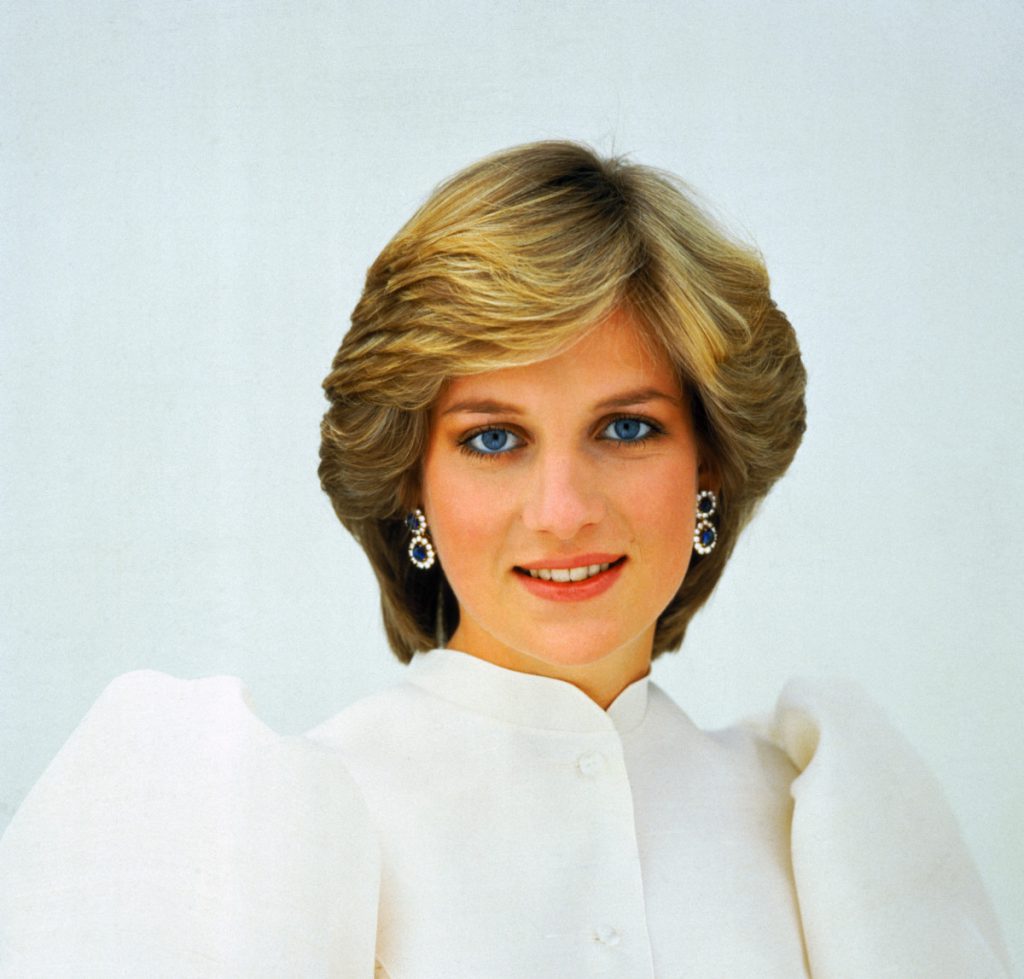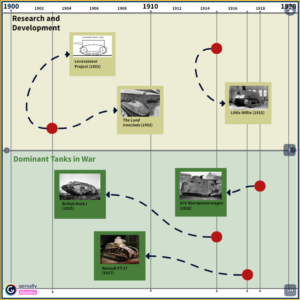Winner of the Fall 2019 StMU History Media Award for
Best Article in the Category of “People”
Two million people are cheering her name, 750 million eyes are upon her. She’s smoothing out her silk, ivory colored wedding dress embroidered with pearls and mother-of-pearl sequins. She is being transported to St. Paul’s Cathedral by five military police officers in a fairytale-like coach. Keeping her composure, she steps out of the stagecoach in her Cinderella-like wedding slippers. She walks up the steps of the Cathedral, head held high, the Spencer family tiara decorating her gorgeous short, blonde hair. As she enters the dome, all eyes are drawn to her glowing, innocent features and the twenty-five-foot train trailing behind; the opening song is played by one of the three orchestras that her fiancé has chosen. The date is July 29, 1981, marking the wedding of Prince Charles to Lady Diana. Diana knew that becoming Princess of Wales was going to be a great responsibility, one that couldn’t be taken lightly. She strongly believed it was either going to be a fairy-tale dream come true or a total nightmare; either way, it was too late that day for her to change her mind.1

Charles was absent for a lot of the first year of their marriage: he tended to his royal duties, participated in shooting, polo, and painting pictures. He lived a comfortable, no strings attached life with Diana that first year. Once, he even admitted to his past liaisons with some married women. They were deemed a “safer choice” because they would keep quiet—due to having families and husbands. Charles assumed Diana would fit perfectly into his lifestyle like a missing puzzle piece. This was not the case, as Diana and he had very different forms of entertainment and pastimes; there was also a rather large age gap of fourteen years.3 During their engagement, when Diana was nineteen and Charles was thirty-three, Prince Charles received a package. Diana, already suspecting Charles was hiding something, found a gold bracelet addressed to ex-lover Camila Parker-Bowles with the initials “F” and “G” intertwined; the initials were of the nicknames they had given to each other.4 “This was about two weeks before we got married…. So rage, rage, rage! ‘Why can’t you be honest with me?’ But, no, [Prince Charles] cut me absolutely dead.”5 Charles denied the accusations, making her feel paranoid and leaving her with second thoughts about marriage. Diana claimed she had considered canceling the wedding, discussing the situation with her two sisters, both responding with “your face is on the tea-towels so you’re too late to chicken out now.”6

The public viewed the wedding with a lot of admiration, so much that it blindsided them. The public was completely unaware that Diana could not handle the public scrutiny; her face was on every magazine cover and she was all the media talked about. Princess Diana was portrayed as calm and very put-together; she carried herself in a way that didn’t expose her weaknesses. This was the very mindset of the royal family, any form of unwanted exposure was immediately hidden or covered up, and she learned this a little too late. The wedding that was perceived as “a ceremony that bore the weight of centuries of national tradition” had a tragic story behind it.7
Diana would frequently visit the kitchen where she would participate in binge eating behaviors, such as eating endless bowls of ice cream and special snacks at request. Staff and friends were concerned about Diana’s dietary habits; she was so thin despite consistently raiding the fridge and eating excessive amounts of food in one sitting. Although they would frequently see her overindulge in food, Diana would make herself throw up five to six times a day. Diana claimed that her disorder was first triggered because of a comment Prince Charles made.8 “My husband put his hand on my waistline and said, ‘Oh, a bit chubby here, aren’t we?’ and that triggered off something in me—and the Camilla thing, I was desperate…. I remember the first time I made myself sick.”9

Diana started slipping into the deep end; her first pregnancy was tough on her body. Apart from morning sickness, Diana suffered from bulimia. Bulimia nervosa is characterized by recurrent episodes of binge eating followed by compensatory behaviors to prevent weight gain by self-induced vomiting, fasting, or excessive exercise. The onset of bulimia nervosa can be due to stressful life events and usually develops between adolescence and early adulthood. There is an increase in depressive symptoms and depressive disorders in affected individuals as well as a higher suicide risk. Mood disturbance begins at the same time or during the development of the eating disorder, but in other individuals, predates the illness.10
Diana became desperate; she would run around with a lemon knife. Diana knew something was wrong with her but didn’t know how else to ask for help. When she did reach out for help, Charles thought Diana was crying wolf and dismissed her threats. Charles became alarmed and overwhelmed by Diana’s frequent mood swings, her consistent crying, and obsession with his old mistress, Camilla Parker Bowles. He believed that she was being immature and seeking attention, so instead of helping his wife, he went riding on the Sandringham estate. Diana almost felt challenged by his response, so at two months pregnant, Diana placed herself at the top of a wooden staircase in Sandringham and threw herself down the stairs.11 “Very, very difficult pregnancy indeed. Sick the whole time, bulimia and morning sickness…. I didn’t know which way to turn at all…. Charles said I was crying wolf and I said I felt so desperate, and I was crying my eyes out, and he said, ‘I’m not going to listen. You’re always doing this to me. I’m going riding now.’ So I threw myself down the stairs.”12
Some could claim that Diana was immature and naive and in reality, she was just a child. Diana had just become a young adult when they were married; she still had an illusion of a perfect marriage, one that wouldn’t suffer from difficulties. Her mindset was heavily influenced by her childhood; Diana’s parents’ troubled marriage and their frequent fights, even after their divorce. She didn’t want her marriage to end up like her parents. Diana believed that a Royal marriage would complete the pretty picture she painted in her head, it couldn’t possibly be any less than perfect—after all, that is what she had read in novels.13
At this point, Diana knew that she wasn’t going to get what she wanted or what she needed: stability and compassion. Instead, she was being scorned and her feelings were minimized. “I was thrown into the deep end,” she said of royal life. “Nobody ever helped me at all.” This incident was one of many cries for help during their first year of marriage.14
Diana made several other threats to her life; she began engaging in self-mutilation. In one incident Diana threw herself against a glass display cabinet at Kensington Palace and shortly after, slashed her wrists with a razor blade. Even during an argument with Prince Charles, she picked up a penknife and cut her chest and thighs.15 Still, Diana kept up a happy-go-lucky persona for the public and continued her duties as Princess of Wales. In the midst of a troubled time, she grew and matured; she found herself. Even if Charles solely wanted to please his parents by marrying Diana when his heart belonged to someone else, she was beloved by so many and the public saw her as one of their own. Diana was one of the only Royals that didn’t make the masses feel like less than they are.16 She was able to find herself through the volunteer work she engaged with and by connecting to the public.17
Diana was perceived as having it all, being the “It Girl” only to be revealed that within those palace walls, she was living a nightmare.
- Anne Matheson, “A Day of Splendour and Romance,” Australian Women’s Weekly (2018): 48. ↵
- Barbara Cartland, “Royal Marriage: When Life isn’t a Romantic Novel,” Newsweek 120 (1992): 72. ↵
- A Biographical Encyclopedia, 2002, s.v. “Women in World History,” 591. ↵
- Andrew Morton, Diana: Her True Story (New York: Pocket Books, 1992), 90. ↵
- Andrew Morton, “Diana’s Secret Tapes,” People 88 (2017): 88. ↵
- Andrew Morton, Diana: Her True Story (New York: Pocket Books, 1992), 91. ↵
- Barbara Cartland, “Royal Marriage: When Life isn’t a Romantic Novel,” Newsweek 120 (1992): 72. ↵
- Andrew Morton,Diana: Her True Story (New York: Pocket Books, 1992), 96. ↵
- Andrew Morton, “Diana’s Secret Tapes,” People 88 (2017): 88. ↵
- American Psychiatric Association, Diagnostic and Statistical Manual of Mental Disorders Fifth Edition (Arlington, VA: American Psychiatric Association, 2013), 345-347. ↵
- Andrew Morton, Diana: Her True Story (New York: Pocket Books, 1992), 104-105. ↵
- Andrew Morton, “Diana’s Secret Tapes,” People 88 (2017): 88. ↵
- Barbara Cartland, “Royal Marriage: When Life isn’t a Romantic Novel,” Newsweek 120 (1992): 72. ↵
- Andrew Morton, “Diana’s Secret Tapes,” People 88 (2017): 88. ↵
- Andrew Morton, Diana: Her True Story (New York: Pocket Books, 1992), 105. ↵
- Martha Duffy, “Fractured Fairy Tale,” Time Magazine 147 (1996): 60. ↵
- Encyclopedia of World Biography, 2004, s.v. “Diana Princess of Whales,” 531. ↵



102 comments
Judy Reyes
Princess Diana was very good at keeping her private life private. Despite everything she had to face alone, she was still very well put together. It is saddening to see that she was left to figure out everything on her own. Her own husband would not even be there for her in the hard times for it seemed as if he only married her to make his parents happy. Throughout everything, she made it out to be one of the most famous and beloved person the public eye had ever seen.
Kelsey Sanchez
wow, this story was shocking to read. I can’t believe Diana did not give up on the relationship and still stayed with Charles the whole time. It was interesting to see how she got married at such a young age. I think she just imagined that royal marriage was not going to be like any other marriage. She thought it was all going to be true, honest, and worth it. Until, of course, the gold bracelet was seen and from there it all went downhill. I was glad to read that even though she struggled all those sad moments and had lost her self, she was able to react and find her true self.
Jacqueline Mendez
It’s truly saddening that a girl who only wanted love and understanding was rejected and called attention seeker by her own husband. I absolutely love the royal family, but I do believe in the case of Diana their treatment towards her was quite awful and unforgiving. I don’t think that they understood how important mental health was when it came to Diana. She gave so many signs that she needed help and she needed that support and love from everyone around her. A truly hard life that she had behind the scenes of being the “It girl”.
Amanda Uribe
Very good article topic. Everyone that speaks about Princess Diana, has something kind and beautiful to say about her. It is so sad to read about all of the terrible things she had to go through. I did not know that she struggled with bulimia until I read this article. It is so sad that she had to keep all of her emotions repressed in order to keep a perfect image.
Trinity Casillas
Reading about how Charles felt the first year of his marriage was described as “no strings attached” made me giggle and also question what marriage meant for him. I don’t understand why they got married if they both had different lifestyles and I also never knew the two had such a big age gap. I’m saddened by the fact the Diana thought of backing out of the wedding but didn’t because everyone’s eyes were on her. My knowledge of Diana was very similar to the public’s, I thought she was put together well oiled machine. Reading about her eating disorder and her attempts to take her life is heartbreaking especially because Charles ignored and mocked her cries for help. I admire her even more because she found strength in charity even though she was battling her inner demons.
Sabrina Doyon
Good god, I can’t believe she went through all that torture. It is so incredibly sad that she suffered from an eating disorder and I can’t imagine how terrible being pregnant would have been. I can’t even fathom my husband saying he is leaving when I am begging him for help. This poor poor woman was just a naïve child who though getting married to a prince would make her life picture perfect when in reality it just made her life a living hell.
Mitchell Yocham
In this society we live in, so many people come out to being depressed that, it’s hard to show compassion for people that are in serious need of help. I, along with others, would probably believe that she is a princess and she wouldn’t have mental problems because she can have whatever she wants. However, royalty can struggle with mental problems as well, and it is just so horrible that she have to deal with everything.
Thalia Romo
This article not only spoke about the marriage of Princess Diana, but also health disorders. I would have never assumed that such a “happy” pictured lady, was so broken on the inside. I find it sickening that Charles didn’t care to help Diana, even after the countless instances in which she went to harm herself; It really shows how he didn’t care much for her. Nonetheless, I’m glad Diana was able to find herself, get better, and help others in the process. She really left a legacy that can not be matched.
Sofia Martinez
Everyone knows that Princess Diana’s marriage was not healthy, it even showed by her eating habits and the way that she would present herself with Prince Charles in royal events. She was an ordinary woman, I believe she did teach before she married, she was a commoner until she got to be compromised with responsibilities as Princess of Wales. Obviously her train-wrecked marriage was a factor of her mental health issues, it could have been prevented if she would have gotten help and guidance.
Mauro Bustamante
Mental health is an important thing to consider when we see people on the media. Princess Diana was considered the princess of the people, but no one really cared about her own well being. She suffered from bulimia, and I also has no idea how problematic her marriage with Prince Charles was. This article was well written and was very informative also interesting because it brings awareness that all people struggle including celebrates and people of higher power or status and many other have to realizes that. Also it brings awareness of mental illness and its importance.